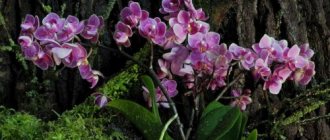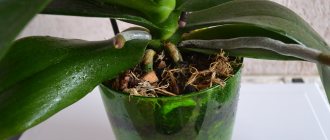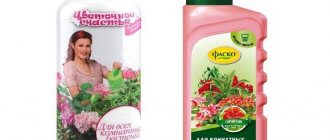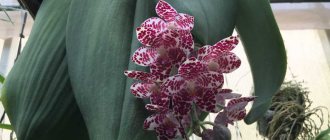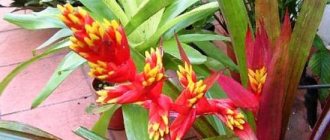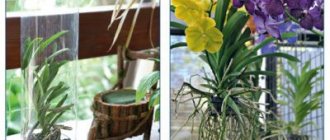Author: Alexey Streltsov Category: Partners Published: December 30, 2019Last edits: July 22, 2020
Many of our clients ask the question: how to grow orchids?
Growing orchids is a very difficult process, both for amateurs and professionals. Orchids react sharply to changes in temperature, light, and moisture coefficient. They also have special needs for aeration and microelements.
The most important factor for growing orchids is the substrate. And we suggest using Orchiata as a substrate.
Orchiata is an ideal substrate for growing and propagating orchids. It provides a natural environment for orchids and offers many growing benefits.
- Purchasing rooted cuttings
Orchiata is produced by Besgrow. This New Zealand company is a professional in the production of orchid substrates. In addition to orchiata, they also produce Spagmoss - pressed sphagnum moss, as well as panels made of tree fern.
Orchiata is made from chips of the bark of the radiata pine (Pinus radiata). The pines for this substrate are grown in private, controlled forests. Therefore, the entire product line is made from sustainable and renewable resources.
Basic properties of Orchiata
Orchiata produces a high quality, toxin-free substrate, available in a variety of grades to suit specific needs.
Orchiata is distinguished not by the fact that it is the bark of a special pine tree, but by its manufacturing technology. Orchiata is fermented by bacteria and fungi.
Orchiata has a number of advantages:
- Stability under different influences and temperatures;
- Does not rot in pots for many months;
- Prevents pathogenic bacteria and fungi from multiplying;
- Creates favorable conditions for the proliferation of beneficial microflora;
- Maintains wet-dry cycle;
- The bark has roughness, which creates conditions for retaining moisture and nutrients, as well as for strengthening the roots;
- Good aeration of the roots, due to the fact that after watering the orchiata does not bunch up;
- Balanced pH level.
How to choose in the store and the best composition
When choosing ready-made soil for orchids, it is important to pay attention to the following details:
- incoming components, they can be: vermiculite, expanded clay, tree bark, coconut fiber or chips, as well as swamp moss (the mixture should not contain earthen soil);
- what types of orchids is it intended for?
- size of bark fractions (indicated on the package);
- date of manufacture (live moss is often present on fresh substrates);
- presence/absence of mold (transparent packaging allows you to see this).
Upon visual inspection, the soil for orchids should be a mixture of fractions of different sizes.
It should not be black and look like earth. It is best to give preference to well-known manufacturers, after reading reviews about them.
Line of ready-made substrates
Orchiata Precision, 3-6 mm
Mainly used for orchid seedlings and orchids in flasks. AFP (air permeability) 43-50%, WHC (moisture capacity) 52%.
Orchiata Classic, 6-9 mm
For young orchids, a good fraction for a second pot growing. AFP 47-52%, WHC 55%.
Orchiata Power, 9-12 mm
For young and mature small orchids, a good fraction for a second pot growing. AFP 49-53%, WHC 56.8%.
Orchiata Power+, 12-18 mm
Ideal for mature orchids and orchids that require good aeration. AFP 50-54%, WHC 56.8%. Most often it is chosen for phalaenopsis.
Orchiata Super, 18-25 mm
The largest faction. Ideal for large mature orchids and orchids that require more air to the roots. AFP 51-55%, WHC 56.8%.
Orchiata series of substrates
Orchiata Precision is a substrate with a fraction size of 3-6 mm. Used for seedlings of orchids of the smallest size. The air permeability rate is 43-50%, the moisture capacity rate is 52%.
- Eggshells as fertilizer for garden plants
Pictured: Orchiata Precision
Orchiata Classic is a substrate with a fraction size of 6-9 mm. They are most often used for young orchids and when transplanting into a wider pot. The air permeability rate is 47-52%, the moisture capacity rate is 55%.
In the photo: Orchiata Classic
Orchiata Power is a substrate with a fraction size of 9-12 mm. Used mainly when transplanting into a new pot. The air permeability rate is 49-53%, the moisture capacity rate is 56.8%.
Pictured: Orchiata Power
Orchiata Power+ is a substrate with a fraction size of 12-18 mm. Used for already mature orchids and for species that grow well with maximum aeration. Most often, this species is added to phalaenopsis. Air permeability index 50-54% moisture capacity – 56.8%.
In the photo: Orchiata Power+
Orchiata Super is a substrate with a fraction size of 18-25 mm. Used for the largest orchids. The air permeability rate is 51-55%, the moisture capacity rate is 56.8%.
In the photo: Orchiata Super
Application
You need to take the largest fraction 18-25. This bark is suitable for use both in adult plants and in a mixture with moss for teenagers.
From it you can choose a smaller fraction for teenagers and a larger fraction for adult orchids. If it’s just for adult orchids, then you don’t need to sort through anything. This fraction is suitable for almost all orchids.
Do not soak Orchiata in boiling water!
Orchiata is sold dry, so it is necessary, like any other bark, to be soaked in water at room temperature for 4-5 days before planting the orchid.
Orchiata in professional cultivation
Around the world, professional orchid growers note the following features of orchiata:
- Increases plantation productivity;
- Provides vigorous and unhindered growth of orchids;
- Reduces plant maturation time, which helps reduce labor costs and plant costs;
- Can be reused after steam treatment;
- Reduces the cost of using fungicides;
- Combines well with other types of substrates.
Fern roots
The roots of the royal osmunda were used for growing orchids much less often than pine bark, but they were no worse suited for them. Now this fern is listed as a protected species, and it is strictly prohibited to let it onto the substrate. More common plant species have the same qualities:
- do not cake;
- retain moisture well;
- air- and light-permeable;
- contain many microelements useful for orchids.
Note! Phalaenopsis categorically do not like this component. It is suitable for orchis, cymbidium, dracula, lady's slipper varieties.
The soil cannot consist entirely of fern roots; they are the same additive as peat.
Fern roots
With a large amount of this component, the substrate becomes too moisture-intensive, which contributes to root rotting.
Do-it-yourself soil preparation
Some gardeners prefer to prepare soil for orchids at home. This way they are absolutely sure of the components used and their correct processing.
So, soil for orchids: do-it-yourself composition. It includes:
- sphagnum moss;
- lowland peat;
- fern roots;
- pine cones and bark;
- charcoal (It is better to collect what is left after the fire; purchased coals can be additionally treated with a flammable composition. If the fire was lit with a special liquid, coals cannot be taken from it);
- vermiculite;
- expanded clay;
- perlite;
- dolomite flour;
- coconut fiber.
Some also add polystyrene foam here, but there is an opinion that under certain conditions styrene is released from it, which is harmful to orchids.
Note! Peach leaves can be a useful component. They have a fungicidal effect and prevent the development of mold fungi in the substrate.
The ingredients in the list above do not need to be used all at once. You can make compositions from some substances:
- charcoal and pine bark (1:5);
- bark + sphagnum + coal (5:2:1);
- bark + peat + expanded clay + coal + dolomite flour (3+1+1+1+1).
Step-by-step instructions for preparing the substrate:
- Prepare and arrange all ingredients.
- Boil the bark.
- Sort through the sphagnum, discarding all that is unnecessary.
- Mix the components in the correct proportions.
- Check acidity.
- Pour soil into the pots.
- Plant a flower.
Despite all the capriciousness of orchids, you can make soil at home that will be no worse than store-bought soil. If you adhere to these rules, the tropical inhabitant will delight you with health and lush flowering.
Catalog: Soils (Orchiata, spagmoss, ceramis, perlite, triphern, expanded clay)
We accept orders around the clock 24/7. Processing and confirmation of orders daily from 10 to 18, except weekends. Closed: Sunday and Monday. Assembly and dispatch of orders from Monday to Saturday. The paid order is dispatched within three days after payment.
Conditions for placing an order:
An order can be placed through the website japchemrus.ru by writing a message to the VK group or by email at [email protected] , indicating the product name and quantity. The same way to transfer your order to you.
Method of sending goods:
Russian Post
(simple parcel without assessment or 1st class without assessment, which is cheaper). You pay for your order + shipping + cost of the box. If you need to send a parcel with a grade or 1st class, please write about this additionally.
I ship after 100% prepayment of the order, within three working days after payment. After sending the parcel, I provide the tracking number to track the parcel.
With the help of transport companies
: SDEK, Boxberry, OZON, PEK.
Sending by Russian Post, SDEK and PEC is carried out every day except Sunday and Monday.
OZON ships Wednesday and Saturday.
All delivery is calculated individually, based on the weight and dimensions of the order. If you would like to insure your order for the cost of the order, please let me know. Orders are automatically insured for 100 rubles. Insurance costs 0.8% of the order amount.
With the first logistics component, a warehouse (we deliver your orders ourselves, which reduces the cost of delivery) . We are not responsible for the performance of delivery services. The order is dispatched only after 100% payment of the order.
Shipping method by courier services:
- I send by any courier services that are convenient for you, with the first logistics leg “door”.
- The courier is called only after 100% payment of the order.
- Courier services are called the day before the order is picked up. To send, we need the recipient's address, name and phone number.
- Dispatch by courier services occurs only on weekdays.
- Payment for courier delivery is borne by the buyer.
- We are not responsible for the work of courier services, including the delivery time of the order.
Orders not paid within 3 calendar days after invoice are issued are cancelled.
Payment Methods:
Payments from legal entities are accepted ONLY to a bank account.
From individuals:
Cash. When picking up, you can pay in cash. Pickup is possible upon agreement at least 24 hours in advance.
According to the receipt. You can transfer money to our bank account. An invoice will be sent after placing and confirming your order.
By bank card. To choose to pay for goods using a bank card: after confirming the order, you will be sent a link to make a payment by bank card. Payment is made through the secure gateway of PSB Bank
pine bark
Gatsania flower - how it blooms on a club, what soil is needed for growing
The substrate closest to natural. The bark evaporates moisture, the roots of the epiphyte absorb it. Orchids adhere well to pine bark soil and easily maintain a vertical position.
Oak bark is even better, but this is a premium class, since it is more difficult to separate from the trunk than pine bark and is more durable.
pine bark
Do-it-yourself substrate for orchids made from pine bark is a completely worthy replacement for ready-made store-bought mixtures.
